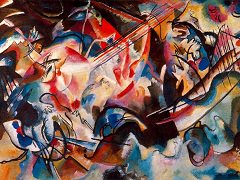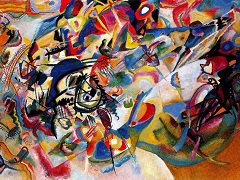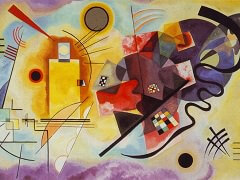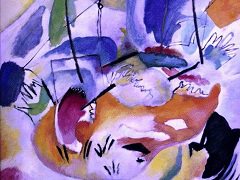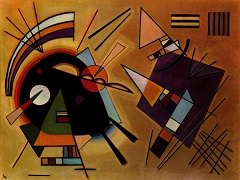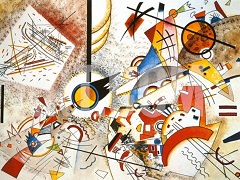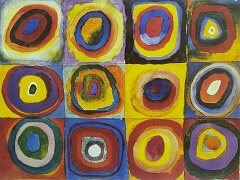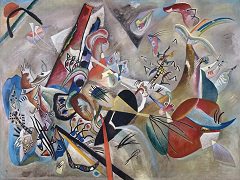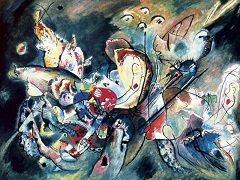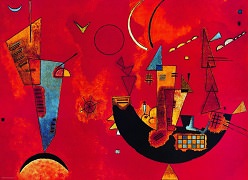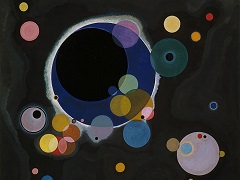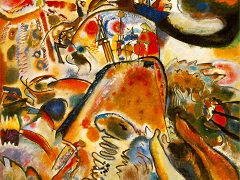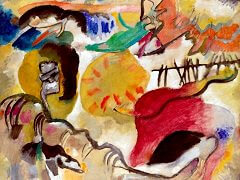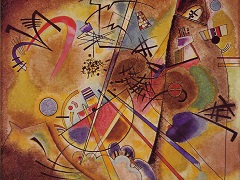Composition VIII, 1923 by Wassily Kandinsk
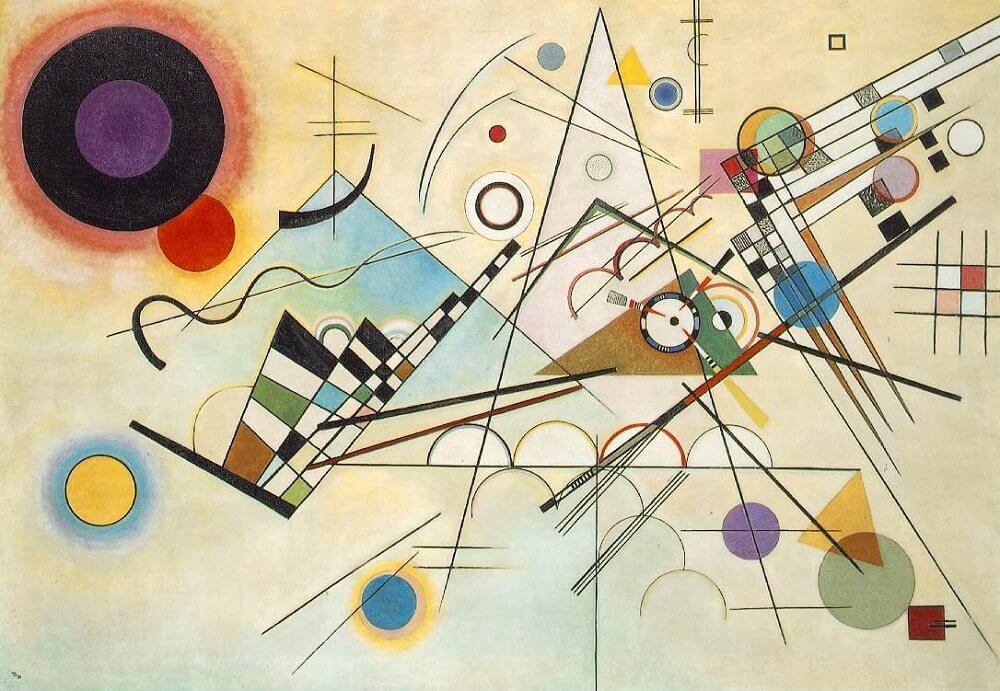
Composition VIII has a long and obscure history. Kandinsky himself considered it to be the acme of his early Bauhaus period.
No formal element can morphologically be related to any figurative prototype. The geometric vocabulary seems to consist of comparatively few components like circles, semicircles, angles, rectangles, and lines. Yet even if one begins to try to describe the individual appearance of the various circle forms, neither pinpoint, ball, disk, globe circular object, or orb serves to determine accurately their character.
There appears to be no logic in the imagery; the components do not "respond" to each other; no organic continuity is evident and no psychological associations are evoked. Comparable to the sublime humor of a divertimento, the elements - although they seem to be strictly geometric - actually deviate from their mathematically defined shapes.
Closer study not only reveals a multitude of different shades of color but it also becomes clear that no one color is identical with any other in the painting. The colors are not "applied" to any object; they have no brio, or pastose quality, but are phenomena in their own right, as are the geometric forms. Because of the impossibility of giving a lucid description of Composition VIII, the attractive temptation is to bypass the problem by comparing the elements in the painting with those in atomic physics which, of course, are also not part of the objective world. And it is most revealing, especially because of the indefinable poetic quality of the painting, to examine the response of of Niels Bohr to the problem of finding a solution to the dilemma:
We must keep in mind that language can only be used as it is used in poetry where it is not its purpose to precisely describe given facts but rather to create images and inspire thoughts in the mind of the listener."

